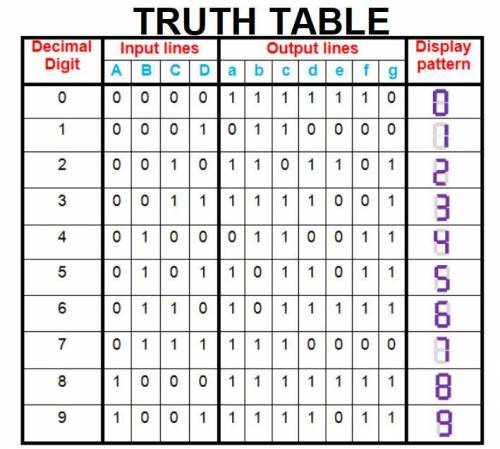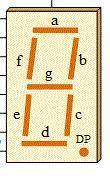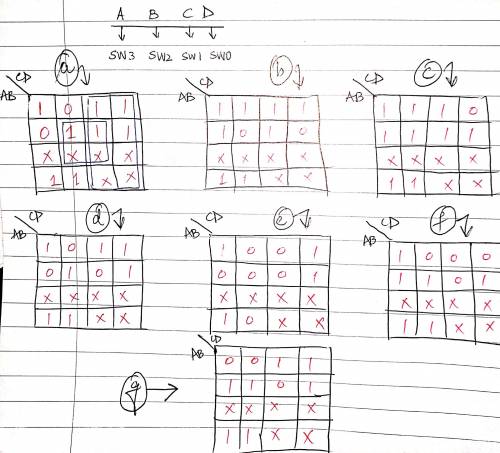 1
1 a. The expected cost of digitizing a form is $2.50
b. The expected digitization cost per form of the forms sent by the client is $3.75, without a mix of forms.
c. This leads to an expected loss of $1.25 per form for BPO.
Explanation:
1. Data:
Form Type Mix of Forms Form Cost
A 0.5 $3.75
B 0.5 $1.25
b. Calculation of Expected Cost of digitizing a form:
Form Type Mix of Forms Form Cost Expected Cost
A 0.5 $3.75 $1.875 (0.5 * $3.75)
B 0.5 $1.25 $0.625 (0.5 * $1.25)
Total expected costs $2.50
c. Calculation of Expected cost of Form actually sent by Client without a mix of forms:
A 01 $3.75 $3.75 (1 * $3.75)
Total expected costs $3.75
d. Calculation of Expected Loss:
Expected Price = $2.50
Expected cost = $3.75
Expected loss = $1.25
e. The expected value (cost, price, or gain or loss) from the form digitization is the sum of all possible values from the mix of forms, each multiplied by the probability of its occurrence.
 54
54 The guy copy and pasted it from answer from 2018 just so you know
Explanation:
 54
54 The guy copy and pasted it from answer from 2018 just so you know
Explanation:
 1
1  1
1 Answer:
Answers explained in detail below.
Step-by-step explanation:
1.
In the poem "Barter" by Sara Teasdale, the meaning of "barter" goes beyond its literal definition of exchanging goods. The author employs word choice, figurative language, and poetic devices to convey a deeper meaning and set the tone of the poem. Teasdale uses the concept of "barter" as a metaphor for the way life should be lived. The poem suggests that instead of valuing material possessions or worldly gains, one should prioritize the intangible and beautiful aspects of life. The author encourages readers to exchange their worldly concerns for moments of loveliness, joy, and spiritual fulfillment.
Teasdale's word choice, such as "loveliness," "splendid," "holy thoughts," and "ecstasy," evoke a sense of beauty, wonder, and spiritual richness. The figurative language, including "blue waves whitened on a cliff" and "music like a curve of gold," paints vivid and captivating images, enhancing the poem's tone of enchantment and allure. The use of poetic devices, such as rhyme and rhythm, adds musicality and emphasizes the lyrical quality of the lines.
2.
The speaker's purpose in "Acres of Diamonds" is to convey the viewpoint that opportunities for wealth and success are readily available to individuals in Philadelphia. The speaker emphasizes the idea that getting rich is not only possible but also a duty. The speaker's viewpoint is that pursuing wealth honestly is akin to preaching the gospel and that the majority of rich individuals are honest and trustworthy. To advance his purpose and convey his viewpoint, the speaker employs various rhetorical strategies. One such strategy is the use of anecdotal evidence, exemplified by the story of the diamond found in North Carolina and the professor's analysis of its origins. This story serves to illustrate the idea that valuable opportunities may be hidden in unexpected places.
The speaker also uses persuasive language and appeals to logic and reason. He asserts that the city of Philadelphia is uniquely suited for individuals to become wealthy quickly and honestly. By stating that the Queen of England's lack of jewels has diminished the need for diamonds, the speaker appeals to the audience's practicality and desire for financial gain. Additionally, the speaker employs repetition and direct address to engage the audience and reinforce his message. By repeatedly emphasizing the concept of "acres of diamonds" and directly addressing the audience, the speaker aims to inspire them to recognize the potential for wealth within their reach.
3.
The main argument of the passage is that virtual friendships, despite their prevalence in a digital world, cannot provide the same level of emotional connection and support as face-to-face friendships. The author supports this argument by highlighting the limitations of online friendships, such as the lack of shared real-world experiences and the inability to convey nonverbal cues and emotions effectively. The author also references a study on communication that emphasizes the importance of body language and tone in conveying meaning.
The reasoning and evidence used to support the argument are valid, relevant, and sufficient. The author presents examples and explanations that demonstrate how online friendships may fall short in terms of emotional bonding, comfort, and understanding. By pointing out the potential misunderstandings and limitations of digital communication, the author strengthens the argument that in-person friendships offer more meaningful connections.
The author does not use false statements or fallacious reasoning to support the argument and claims. The reasoning is grounded in observations about human interaction and the limitations of digital communication. The evidence provided, such as the study on communication and the exploration of the nature of true friendships, aligns with common experiences and observations about the importance of physical presence and nonverbal cues in relationships.
Truth Table:
let A = SW3, B = SW2, C = SW1, D = SW1
1. The truth table is attached in mage below. abcdefg are the 7 outputs of seven segment display.
2. K-maps of all 7 outputs is also attached as image to this response.
3. Outputs of seven segment display as SOP are as follows =
a = ~B~D + C + BD + A
b = ~B + ~C~D +CD
c = ~C +D +B
d = ~B~D + ~BC + B(~C)D + C(~D) + A
e = ~B~D + C~D
f = ~C~D + B(~C) +B(~D) + A
g = ~BC + B(~C) + A + B(~D)



Truth Table:
let A = SW3, B = SW2, C = SW1, D = SW1
1. The truth table is attached in mage below. abcdefg are the 7 outputs of seven segment display.
2. K-maps of all 7 outputs is also attached as image to this response.
3. Outputs of seven segment display as SOP are as follows =
a = ~B~D + C + BD + A
b = ~B + ~C~D +CD
c = ~C +D +B
d = ~B~D + ~BC + B(~C)D + C(~D) + A
e = ~B~D + C~D
f = ~C~D + B(~C) +B(~D) + A
g = ~BC + B(~C) + A + B(~D)



 5
5 This is a guided research paper where you will have the opportunity to learn about and compare analog and digital information, transmission and storage. You will then write a 5 paragraph paper to demonstrate what you have learned on the topics is described below
Explanation:
1.Most commonly digital signals will be one of two values -- like either 0V or 5V. Timing graphs of these signals look like square waves. That's the big difference between analog and digital waves. Analog waves are smooth and continuous, digital waves are stepping, square, and discrete.
In analog technology, a wave is recorded or used in its original form. So, for example, in an analog tape recorder, a signal is taken straight from the microphone and laid onto tape. ... In digital technology, the analog wave is sampled at some interval, and then turned into numbers that are stored in the digital device.
Examples of analogue systems include; Old radios, megaphones and the volume control on old telephone hand sets. Digital signals: Modern electronic products such as computers and mobile phones depend on digital signals. However, a good example of a digital signal is Morse Code.
2.Analog and digital signals are used to transmit information, usually through electric signals. ... The difference between analog and digital technologies is that in analog technology, information is translated into electric pulses of varying amplitude.
Digital transmission is the sending of information over a physical communications media in the form of digital signals. ... However, as digital information cannot be sent directly in the form of 0s and 1s, it must be encoded in the form of a signal with two states, for example: two voltage levels with respect to earth.
Analog transmission. Analog transmission is a transmission method of conveying information using a continuous signal which varies in amplitude, phase, or some other property in proportion to that information. ... Others define that as digital transmission and as a digital signal.
3.Analog in Data Storage & Transmission
When used in reference to data storage and transmission, analog format is that in which information is transmitted by modulating a continuous transmission signal, such as amplifying a signal's strength or varying its frequency to add or take away data.
The main advantage of digital signals over analog signals is that the precise signal level of the digital signal is not vital. This means that digital signals are fairly immune to the imperfections of real electronic systems which tend to spoil analog signals.
Like a light switch, digital signals have two values. Digital signals send segments, while analog signals send continuous streams. Which type of signal is a more reliable way to encode and transmit information? ... This is why more modern technological devices tend to use digitized signals rather than analog ones.
 9
9 The statements which best evaluate the evidence in the excerpt are:
•The authors use a quotaion from an expert to support the argument that social media has been both helpful and hazardous for the Arab American news media.
•The authors use examples of different types of media to support the argument that social media has changed how the Arab American news media operate
Explanation:
In the excerpt from 'The Role of Social Media in the Arab Uprisings' we can see that the author puts forward his view on how social media is impacting the whole world. And to support his claim, the author uses evidence on how social media helps and threatens smaller media outlets.
The author states that many a times information is reached on social media before it is even released by the traditional media.
Apart from this, the author have also used quotation and examples to support his claim.
 5
5 This is a guided research paper where you will have the opportunity to learn about and compare analog and digital information, transmission and storage. You will then write a 5 paragraph paper to demonstrate what you have learned on the topics is described below
Explanation:
1.Most commonly digital signals will be one of two values -- like either 0V or 5V. Timing graphs of these signals look like square waves. That's the big difference between analog and digital waves. Analog waves are smooth and continuous, digital waves are stepping, square, and discrete.
In analog technology, a wave is recorded or used in its original form. So, for example, in an analog tape recorder, a signal is taken straight from the microphone and laid onto tape. ... In digital technology, the analog wave is sampled at some interval, and then turned into numbers that are stored in the digital device.
Examples of analogue systems include; Old radios, megaphones and the volume control on old telephone hand sets. Digital signals: Modern electronic products such as computers and mobile phones depend on digital signals. However, a good example of a digital signal is Morse Code.
2.Analog and digital signals are used to transmit information, usually through electric signals. ... The difference between analog and digital technologies is that in analog technology, information is translated into electric pulses of varying amplitude.
Digital transmission is the sending of information over a physical communications media in the form of digital signals. ... However, as digital information cannot be sent directly in the form of 0s and 1s, it must be encoded in the form of a signal with two states, for example: two voltage levels with respect to earth.
Analog transmission. Analog transmission is a transmission method of conveying information using a continuous signal which varies in amplitude, phase, or some other property in proportion to that information. ... Others define that as digital transmission and as a digital signal.
3.Analog in Data Storage & Transmission
When used in reference to data storage and transmission, analog format is that in which information is transmitted by modulating a continuous transmission signal, such as amplifying a signal's strength or varying its frequency to add or take away data.
The main advantage of digital signals over analog signals is that the precise signal level of the digital signal is not vital. This means that digital signals are fairly immune to the imperfections of real electronic systems which tend to spoil analog signals.
Like a light switch, digital signals have two values. Digital signals send segments, while analog signals send continuous streams. Which type of signal is a more reliable way to encode and transmit information? ... This is why more modern technological devices tend to use digitized signals rather than analog ones.

It will provide an instant answer!
